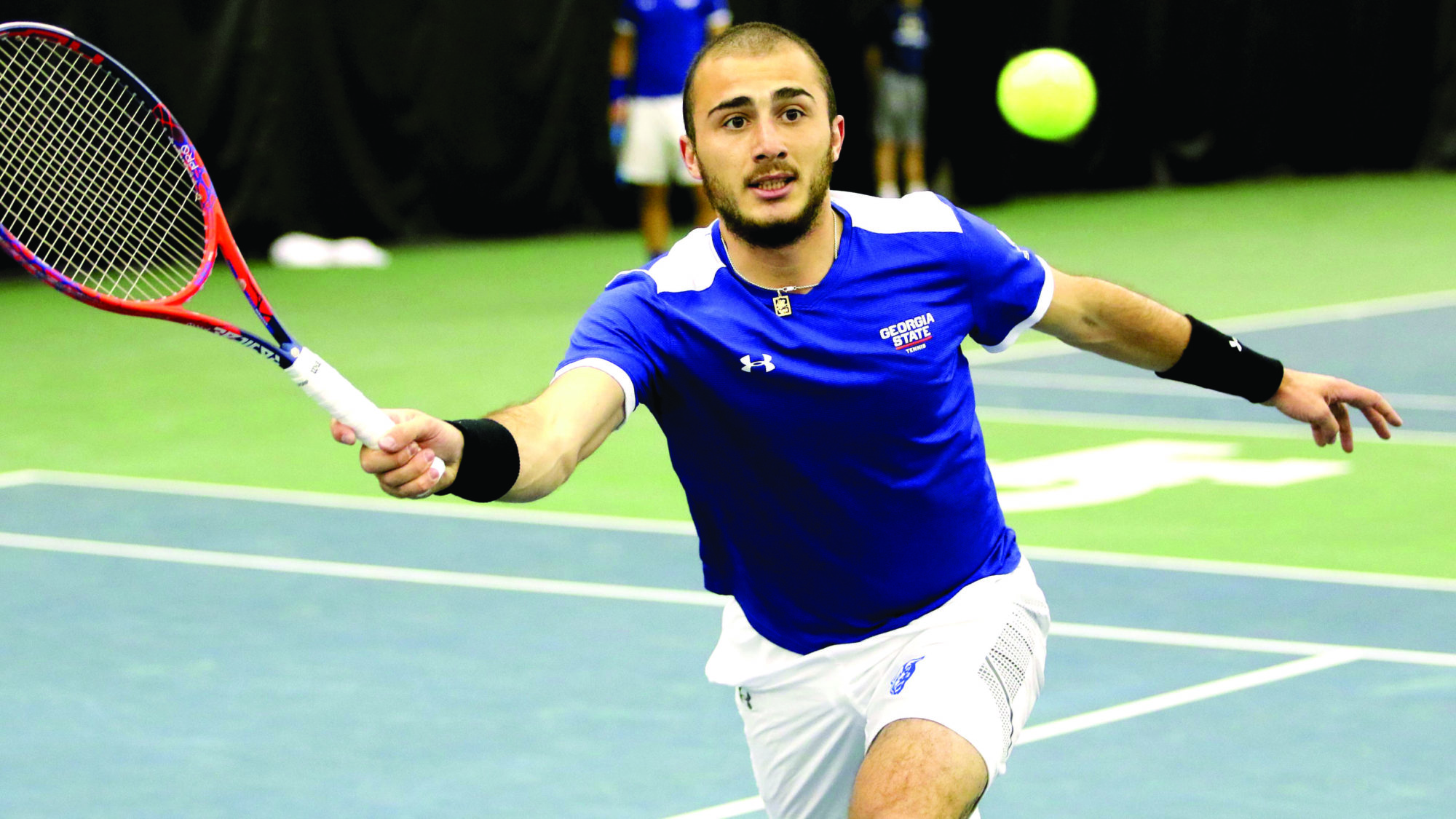
Vazha Shubladze dropped his racket, pumped his fists and celebrated like he had just won Wimbledon. With his 6-3, 7-6 victory over the University of Florida’s Johannes Ingildsen, the sophomore claimed a spot in the semifinals of the Intercollegiate Tennis Association Southeast Regionals.
Just last semester, Shubladze underwent knee surgery to repair a torn meniscus and missed months of action. The realization that his body had unfortunately failed him was tough at first.
“I was really, really depressed for a couple of days [after the surgery],” Shubladze said. “After a few days, I just realized that [the injury], as one of my friends says, could be a minor fallback for a major comeback. I just thought to myself that I was going to come back stronger and a much better player than I was before the injury.”
While the Georgian’s phenomenal run came to an end in the semis, his 4-1 individual record, which included a win over the University of Florida’s Andy Andrade — the No. 31 ranked player in the nation — meant everything.
“[The win over Andrade] was my best win in college by far,” Shubladze said. “It was just amazing.”
A little more than a week prior, Andy Murray, an idol of Shubladze’s, lifted the European Open in Antwerp, Belgium. Like Shubladze, Murray had also come back from a major injury, one over which the three-time Grand Slam champion contemplated retiring. For Shubladze, watching his idol beat the odds was an inspiration.
“I have been a fan [of Murray] since I was, I don’t know, 10,” Shubladze said. “It was very inspirational … and to see him come back to the top level in a match against Stan Wawrinka was a huge boost for me.”
Murray, who struggled through chronic hip pain, tearfully announced in January that retirement seemed like the only road to take. But the Scotsman never gave up. Six months after his second hip surgery, he made his return to singles action at the Western and Southern Open.
Like Murray, Shubladze needed to fight an early mental battle in order to prepare himself for the months of hard work and rehabilitation.
“In the beginning, I was like, ‘I don’t know if I am going to come back,’” Shubladze said. “I had heard of athletes that weren’t able to come back from knee injuries. Even if you think they are healed, they might [worsen] after some period of time.”
After the surgery, the everyday activities Shubladze had become accustomed to suddenly were a challenge.
“I was just sitting in my room [because] I couldn’t even walk or go to the dining hall to grab food because I had to use crutches,” he said. “And I was just wondering, ‘What is going to happen?’”
Once the initial worry subsided, Shubladze decided that the injury would not define his young, blossoming tennis career.
“When I started rehabbing, I was just thinking to myself, ‘I have played tennis for 10 years, and I can’t just stop now or be depressed because this can happen to anyone,’” he said. “So, you just have to do your best to rehab, start playing [again] and just hope for the best.”
Shubladze spent his entire summer break in rehab. This is something that many athletes, myself included, have had to struggle through at some point in their careers. The motivation to keep his tennis dreams and career alive pushed Shubladze to incredible heights.
“Rehab is tough,” Shubladze said. “When you start, you start with baby steps … after a couple weeks or maybe one month, you start to put some weight on [the injury].”
Throughout the three month summer break, Shubladze began to grow more and more confident in his knee, as the rehabilitation workouts became more intense.
He was still not ready for action upon returning to school in August, however, and needed to continue his rehab process on campus.
“When I came back in August, I started practicing a little bit but I could not push my knee 100%,” Shubladze said. As the ITA Southeast Regions began to approach, Shubladze was still unsure of whether or not he would be able to compete.
“I saw a doctor who told me I could play,” he said. “If I felt any kind of pain, I [was told] to stop playing the tournament.”
The doctor’s rules were difficult to follow, especially since his results kept advancing him in the tournament. In his semifinal match, however, things took a worrying turn.
“In the semifinals, my knee was really swollen because I was pushing it too hard,” Shubladze said. “I was playing two matches in a day … and in the semis, it really felt bad, and I couldn’t even serve in the third set.”
While no further damage was done to the knee, the swelling forced Shubladze to take some time off and focus on his ongoing rehab.
“After practice, you rehab,” he said. “And you have to ice it at home as well. You have to be careful.”
Shubladze hopes his 2019-20 season will help put the injury behind him. After his dominant performances at the ITA Southeast Regionals, he has big aspirations.
“First of all, as a team, we want to win the conference,” he said. “That is the biggest goal. We lost last year in the [Sun Belt Conference] finals, and that was so tough.”
For Shubladze, the rehab process and the experience of playing last season, has made him a stronger person.
“I think I am playing much better than when I was playing last season. I think I am more prepared mentally,” he said. “When I started playing college tennis, I was mentally unprepared for it. My personal goal is to get ranked as high as possible, win as many matches as possible and do my best for the team.”
